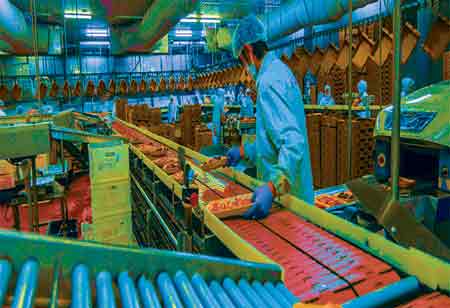THANK YOU FOR SUBSCRIBING
Be first to read the latest tech news, Industry Leader's Insights, and CIO interviews of medium and large enterprises exclusively from Food and Beverage Tech Review
Developments in Food, Flavors, and Fragrances
The food, flavor, and fragrance sector has entered a new era of development in recent years, characterized by technological developments and shifting customer preferences.

By
Food and Beverages Tech Review | Friday, October 28, 2022
Stay ahead of the industry with exclusive feature stories on the top companies, expert insights and the latest news delivered straight to your inbox. Subscribe today.
The food flavor market was $12,712.7 million in 2020 and will reach $19,223.7 million by 2030, representing a CAGR of 3.6 percent.
FREMONT, CA: The food, flavor, and fragrance sector has entered a new era of development in recent years, characterized by technological developments and shifting customer preferences. The market will increase by 5.1percent between 2021 and 2026, reaching $37.3 billion by 2026. Numerous causes contribute to the expansion and evolution of industry demands. Below are some of the most influential trends in the food, flavor, and fragrance industries:
Health consciousness
The COVID-19 pandemic awakened many consumers to the dire effects of their purchasing patterns. People are now seeking healthier options and products with clean labels after noticing the impact of food on their physical and emotional health.
The demand for corporations to promote plant-based proteins as animal substitutes have increased with heightened health consciousness. According to the study, three out of ten consumers boosted their consumption of plant proteins during the pandemic. In 2020, the funding for the plant-based meat business reached $1.4 billion, with big brands such as Nestlé introducing their plant-based products. Food producers will continue to benefit from this new generation of health-conscious consumers as their purchasing power increases.
Sustainability
Consumers know not only the effect food has on their physical health but also the effect it has on the world's health. There is a growing demand for manufacturers to demonstrate sustainable operations and limit their environmental impact. There is a growing demand for manufacturers to demonstrate sustainable operations and limit their environmental impact.
This expectation is accompanied by rising demand for market transparency and clarity regarding the ingredients throughout the entire value chain, from the source to the finished product. These alterations pave the way for introducing new technologies, such as digital olfaction, which give readily implementable data and workflows to aid food, taste, and fragrance manufacturers in evolving their products to fulfill sustainability requirements.
Product uniformity
Traceability and transparency of the supply chain are also critical to ensuring product consistency in this sector. Ingredient shortages have caused inconsistencies in end goods and affected consumer perceptions for the last two years due to supply chain issues.
Maintaining consistent product quality will remain essential as the business prepares for additional possible waves. Manufacturers will need to utilize more tools to gain more visibility into supply chain activity and can use digital olfaction and odor analysis to examine incoming raw materials and ensure product uniformity rapidly.
Customer orientation
Customer-centricity is a prominent trend affecting the food, flavor, and fragrance industries. Today's consumers desire inventive, novel items that offer novel sensory experiences. To address this expanding consumer demand and remain competitive, firms are aware that they must rapidly introduce more high-quality items.
Many manufacturers are turning to intelligent technologies, such as artificial intelligence (AI) and machine learning (ML), to improve efficiency and speed up development. Digital olfaction, for instance, can be utilized for rapid formulation and product screening, enabling businesses to forecast which items will resonate with customers.
The constant changes in consumer preferences and industry standards will continue to provide a platform for machine learning and digital olfaction technologies. This will enable manufacturers within the food, flavors, and fragrances sector, although the exact future of the industry remains to be determined. Companies must be willing and able to adopt new technology and procedures to compete internationally.
I agree We use cookies on this website to enhance your user experience. By clicking any link on this page you are giving your consent for us to set cookies. More info


However, if you would like to share the information in this article, you may use the link below:
https://www.fbtechrevieweurope.com/news/developments-in-food-flavors-and-fragrances-nwid-1446.html





